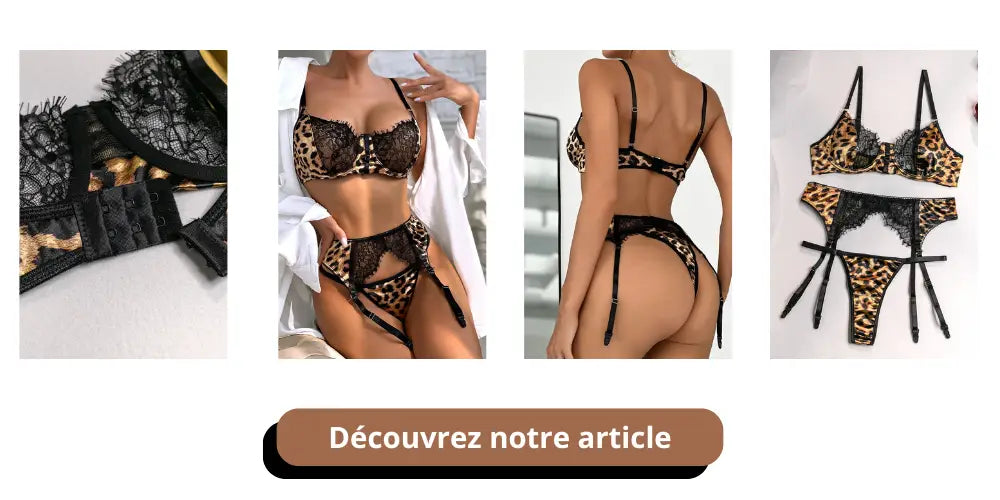What is lace? Everything you need to know about lace
Whether you are in love with elegance, in search of sensuality or attracted by nobility, lace is certainly the fabric you need for your clothing. Lace is a multifunctional fabric that is timeless, elegant, silky and sometimes sexy to satisfy all your clothing desires.
Lace is exquisite as lingerie, original as a bodysuit, magnificent on a backless dress, classy and majestic as a wedding dress.
In this article, we tell you everything about lace: origin, uses, manufacturing techniques, styles, characteristics...
What is lace? Definition
In its classical meaning, lace refers to a soft, fine, light and openwork fabric . It is devoid of warp and even less of weft. Lace is composed of intertwined threads and very fine meshes. This gives this fabric its decorative appearance, most often in scrolls or flowers, all with serrated edges.
However, the classic definition of lace has changed over time. Today, lace is not only represented by its openwork nature. It is displayed, these days, as much by perforated areas as by covered parts.
Also, lace should not be confused with embroidery . Embroidery is not actually a fabric. It is rather an ornament superimposed on a fabric… which is the complete opposite of lace!
Traditional lace is made by hand from linen, silk, cotton, wool, gold or silver threads. The final result, which is intended to be sumptuous, requires meticulous and detailed know-how.
Even if today, industrial lace, with its synthetic threads, tends to supplant hours of artisanal work. Which does not mean that lace loses its originality and its eternal class!
Origins and history of lace
The origins of lace remain uncertain. In reality, no precise date can be given as to the exact appearance of lace. Some consider that lace was born in the 14th century and has Flemish origins. This is materialized by the first mention of “lace” in a treaty concluded in 1390 between England and Bruges.
It was during the Renaissance that manufacturing, which was exclusively owned by England, was transferred to Italy and then to France.
But, for others, lace would certainly have been born in the 16th century in Venice in Italy. Previously called “Passementerie”, lace would have appeared for the first time in the inventory of the dowry offered to Marguerite de Navarre (sister of François I).
In its early days (in 1545), lace was a garment strictly reserved for men. It was not until the 17th century that lace began to attract the interest of women. Moreover, in the 19th century, Napoleon I proclaimed lace as an exclusively feminine garment.
But it was certainly under Louis XIX that lace experienced its glory days. In France, the very first factories dedicated to the manufacture of lace are to be credited to Colbert in the 17th century (in 1665). Alençon stitch became the hub of the lace trade. The products sold like hotcakes.
In the 18th century, laces of remarkable finesse appeared in Normandy, made from silk as a raw material. These were the famous Caen blondes. The fame of lace also spread to other cities in France. This is how the laces of Argentan, Puy, Velay, Saint-Flour and especially Chantilly were born.
Use of lace: What is this fabric used for?
Lace is a versatile fabric that has found its place in several areas of life. The uses of lace can be diverse and varied. But, beyond its multifunctional aspect, lace is above all appreciated in two areas: decoration and clothing…
The use of lace as furnishing accessories
Lace is a fabric that was appreciated for its quality in interior decoration. Lace can thus be used to give more relief and elegance to:
-
Curtains :
To add a dose of romance and a hint of classicism to your home, lace curtains are the perfect choice. They allow light to pass through while subtly preserving the privacy of the room.
-
Placemats
Lace placemats add a vintage touch to your home decor. They are perfect for protecting table surfaces while enhancing their beauty.
-
Paintings
To create an artistic effect and attract all eyes on your walls, you can use lace as wall decoration. When skillfully framed on a painting, lace gives your interior decoration an unparalleled magnificence.
The importance of lace in clothing and lingerie
Although lace can be used as a decorative material, today it is rather popular in fashion, clothing and lingerie. Lace has the ability to transform an ordinary garment into a true masterpiece of sewing. Let's see on which garments lace works wonders these days...
-
Lace dresses
Lace is a fabric that gives your dress class and elegance. This is the reason why lace is used to embellish evening dresses, cocktail dresses and especially wedding dresses .
-
Lace skirts
Wearing a lace skirt allows you to stand out and attract all eyes on you. It denotes self-confidence and brings a more feminine touch to your outfit. Lace skirts can be worn on a daily basis or for special occasions.
-
Lace bodices
Lace bodices are to be worn at formal events. They go perfectly with pants or skirts. Which gives your dressing style an exquisite look.
-
Lace underwear
Lace is also very popular in lingerie. Lace underwear add a sexy and sensual touch to your lingerie. This is why lace is so widely used in the manufacture of bras, panties and babydolls. Lace bodysuits are also popular for their lightness and femininity.
What are the different lace making techniques?
Lace can be created using several manufacturing techniques. Each of these processes requires tact, attention to detail, precision and inspiration from the creator. Here are some of the most famous lace manufacturing techniques…
-
Bobbin lace
Bobbin lace is made from 6 to 600 bobbins, parchment and a support . The design to be made is stitched onto the parchment. With the bobbins, you will interweave the different threads to form the lace and give it the desired pattern.
-
Needle lace
Needle lace production also requires the use of parchment on which you prick the pattern you want to draw. Then, you will prick all the holes using a thread. This will allow you to detect the traces. Finally, once the lace is finished, you must cut the thread and remove the parchment. This is a lace making technique that requires a lot of patience. It is prized for making high quality lace.
-
Cut stitch lace
Cut stitch lace is a manufacturing technique that allows patterns to be made by cutting the fabric. Although this process is less common, it offers the craftsman very interesting creative possibilities.
-
Crochet lace
Crochet lace is made using a crochet hook with a continuous thread . Faster than others, this manufacturing technique is often used for making furnishing accessories or even tablecloths.
-
Shuttle lace or frivolity
Tatting also known as shuttle lace is a technique that mobilizes to create beautiful geometric patterns. Laces made from this technique are appreciated for their beauty and simplicity.
The different styles of lace
There are an incredible number of styles of lace: Alençon lace, Venetian lace, Brussels lace, Calais lace, etc. Let's take a look at two of the most popular styles of lace:
-
Blonde lace
Blonde is a style of lace that originated in the 18th century. It is made with a bobbin, but also with silk, gold and silver threads . Blonde lace is generally appreciated for making wedding dresses and evening wear.
-
Chantilly lace
Chantilly lace is also a bobbin lace. It is a white or black lace. Its exquisite patterns reveal vases, baskets or even flowers. Chantilly lace is often used in the manufacture of elegant accessories and evening tunics.
There you have it, now you know almost everything about what lace is ! This exquisite fabric continues to brighten up our interiors and embellish women's clothing. The beauty and class of lace make it a fabric that has retained its mythical appeal over the centuries. So, what are you waiting for to wear a magnificent lace outfit? Don't hesitate to tell us your tastes in clothing with lace in the comments of this article!










